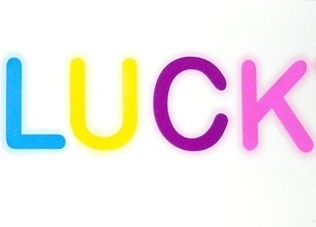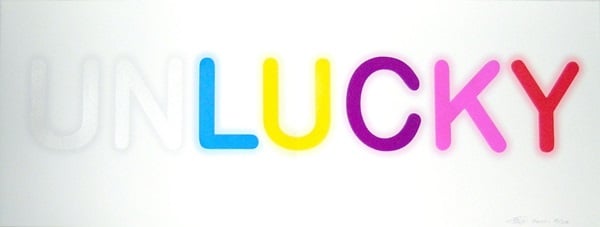Analysis
We Love Collecting… Text Art
From Ruscha and Bochner to Wool and Vilmouth, this is our type of art.

From Ruscha and Bochner to Wool and Vilmouth, this is our type of art.

Astrid T. Hill


Jean-Luc Vilmouth, Untitled (2010). Pigment print , Edition of 50 numbered and signed.
Photo: GDM.
In case you missed the memo, word and text-based art has been getting top billing in the art world lately, what with Christopher Wool’s recent retrospective at the Guggenheim Museum, the thriving market for Ed Ruscha’s work, and the perpetual attractions of Mel Bochner’s paintings. Look familiar?
Wool’s large-format, stencil-style paintings never say quite what they seem to say. The more you stare—and people have been known to stare for hours—the more their meanings shift and evolve. Katherine Brinson, curator of Wool’s recent Guggenheim show, speaks to the evolution of Wool’s body of work, saying, “it has become clear that this evasive quality stems from a fundamental rejection of certainty or resolution…” And yet people keep coming back for more.
Meanwhile Ruscha continues to plumb his fascination with words and typography for subject matter. Consider the bubble gum pink billboard, “Honey, I twisted through more damn traffic today,” which he will paint on the outside of an apartment building overlooking the High Line in May. Cecilia Alemani, director of High Line Art, comments on its universal appeal in that every New Yorker can in one way or another relate to the piece. Alemani told the New York Times: “It has an intimate quality and is a piece you can experience by just walking by it.”
And Bochner, a protean, trend-busting pioneer of conceptual art now in his seventies and apparently getting younger day by day, has since 1990 been painting exclusively in text (not to mention the cover of this month’s Art in America, which features a reproduction of his 2014 painting Blah, Blah, Blah). Text-based art is both a current trend, an established modernist practice, and a millennia-old tradition. Consider hieroglyphics, Chinese calligraphy, and medieval illuminated manuscripts.
For all of these reasons, we love collecting Jean-Luc Vilmouth’s Untitled (2010), a beautifully stenciled work in the “text-based” mode. Vilmouth has something of Wool’s ambivalence and ambiguity—see how “lucky” pops out in bright neon colors from Untitled, while the “un” prefix lurks in the background. At the same time, his elegant line and outstanding craft hark back to centuries of tradition. The role of text in art, as Vilmouth’s work demonstrates, is ongoing, forever shifting, forever enduring.

Astrid T. Hill is the president of Monticule Art, which provides art advisory services to private collectors. She specializes in contemporary primary and secondary market works of art.